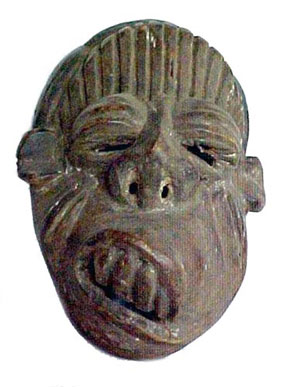
African responses to ill health and misfortune are part of the universal search for meaning in suffering common to all civilizations and cultures. The stages of the lifecourse—birth, youth, adulthood, prestige of elderhood, death and beyond—are sanctified and commemorated. In a recent essay on the Humanities in Africa South African Nobel Prize winner J.M.Coetzee portrays the AIDS epidemic in his country as a struggle between opposing measures of humanity: the classicist ideals of beauty and health, in opposition to the embrace of suffering and death more commonly seen in religious perspectives. These opposing measures exist in tension in African societies and ways that suffering is understood and healing is enacted.

The exhibition section Beauty and Health across the Lifecourse suggests a widespread African formulation of the natural sequence of roles and stages in the continuity of life— the yet unborn, the living, and the ancestors, The figures include: two "fertility dolls" from Botswana; three Sherbro Sande society masks of young womanhood; a painting by Congolese artist Shula of a pregnant woman being attended by two other women; a sculpture of a beautifully scarified Baule woman with a child on her back; a Luba royal throne representing a woman with scarification patterns and elaborate coiffure; three Kota ancestor figures; and a Fang Eyima reliquary guardian figure.

To the right the visitor beholds a contrasting group of sculptures and paintings, in a section entitled Characterizations of Disease and Death: two Pende masks: the pox-marked face of Tundu, the trickster, and the twisted face of Mbangu, in the moment of seizure; a figure of the Yoruba smallpox god Ipona; an Epa society mask of an "abnormality" figure from the Ibo; three crouching Lulua figures with head in hands; two paintings from Kinshasa about HIV/AIDS (Herge Makuzay's Le SIDA, Fleau de l"humanite (AIDS, Scourge of Humanity), Cheri-Cherin's Le SIDA parmi nous (AIDS amongst us), and finally a bronze figure of the Yoruba messenger of death, Ofoe.
The visitor will leave this exhibition section reflecting on the questions "How are misfortune and disease variously explained in African societies" "Do we have similar contrasting images of beauty and health vs. disease and death? and "How do we visualize, understand, and create health?"